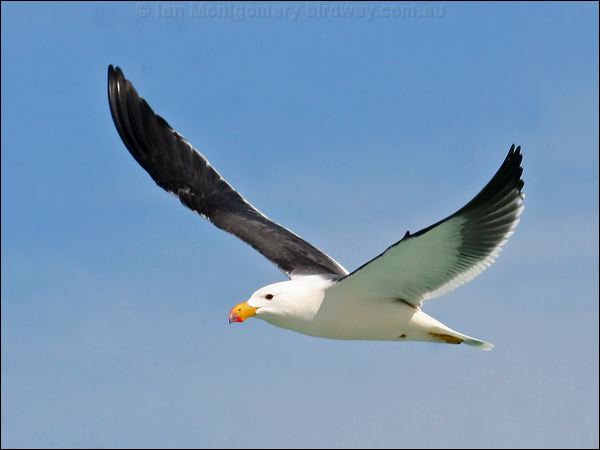
[Image from thepokerbird.com]
Take a look at this picture of a gull. What comes to mind?
Being “bombed” with faecal matter while walking along a promenade at the
seaside, or putting up with loud and raucous calling when gulls squabble over
discarded refuse? Or perhaps one is taken by its elegant
colour scheme?
As I spent several years teaching animal locomotion, what I
see in the picture is a near-perfect flying machine. The wings are aerofoils
and, as long as air flows over them in gliding flight, they generate lift. This is because the
wings have a convex upper surface and a slightly concave under side, so air has
to travel faster over the upper surface causing a lower pressure. The gull is
thus “sucked” upwards – just like aircraft wings operate, although birds were first in
having this feature by quite a few years. Of course, the wings are also used in
flapping flight, requiring powerful muscles, especially those used to depress
the wing. When sufficient airspeed has been achieved, the gull propels itself
using oscillations of the outer part of the wing, while holding the inner
section relatively still, so that its aerofoil section is used efficiently. Explaining
oscillation would require me to go into too much detail for this blog and, for that matter, so
would explaining the mechanism of flapping flight.
Then there’s the shape of the body. The picture shows that
the gull has a near-perfect streamlined shape thanks to its covering of
feathers – but feathers of a different type to those of the outer part of the wing.
The profile feathers allow the smooth flow of air over the body, so that
turbulence behind the gull is very much reduced. This, in turn, reduces drag
and thus conserves energy needed for propulsion. It means that the tail feathers can
be used to deflect air and function as a rudder; and note the position of
the feet – tucked up to ensure the smooth air flow is not badly disrupted. Profile
feathers also create the shape of the wing and feathers of a third type – down – ensure that the gull’s high body temperature is maintained by acting as efficient insulators.
I could go on and on like this – and did during lectures – but no-one can look at a gull
without thinking that it is extraordinarily well adapted to moving through the
air. For those who believe in Creation, all the features of the gull (and I’ve
only mentioned a few here) are evidence of the power of God. For those who believe
in evolution, there is the puzzle of how all the small stages that occurred in
the transformation of a scaled reptile into the gull came about through
mutations in genes. For atheists, it is a matter of chance; for theists, a
result of something designed, just as for believers in Creation. Both theists
and atheists are swept up in a sense of wonder at what they see. So, now comes
a question. Is this sense of wonder identical in those that believe in a God
and those that do not? If the answer is “yes” doesn’t that invalidate the
argument of those, like Henry Gosse, who use such feelings as evidence of their
God? Does anyone out there have any views on this?
No comments:
Post a Comment